Yoga & Surf Retreats in Portugal
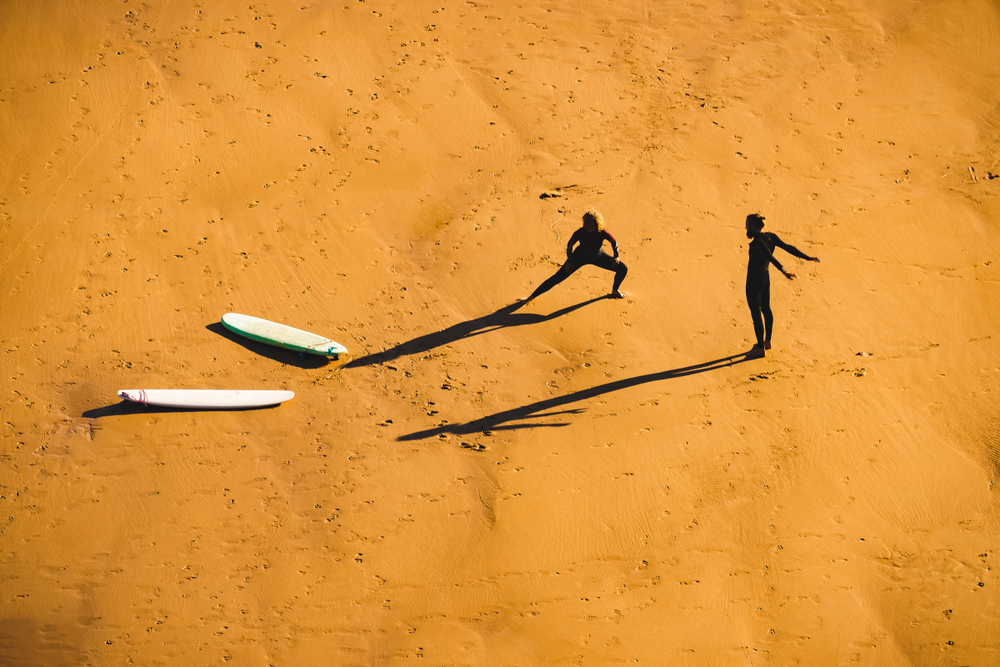
Ever wished you could match your breath on the mat with the rhythm of the Atlantic? Or wondered if you’ll actually get waves and good yoga without playing roulette with your time and money?
I’ve spent years comparing yoga and surf retreats in Portugal—talking to coaches, staying in different regions, and reading every line of the fine print—so you don’t have to gamble. My goal here is simple: help you choose a retreat that fits your level, your budget, and your vibe, so day two already feels like you’ve found your people.
Why picking a retreat can feel overwhelming
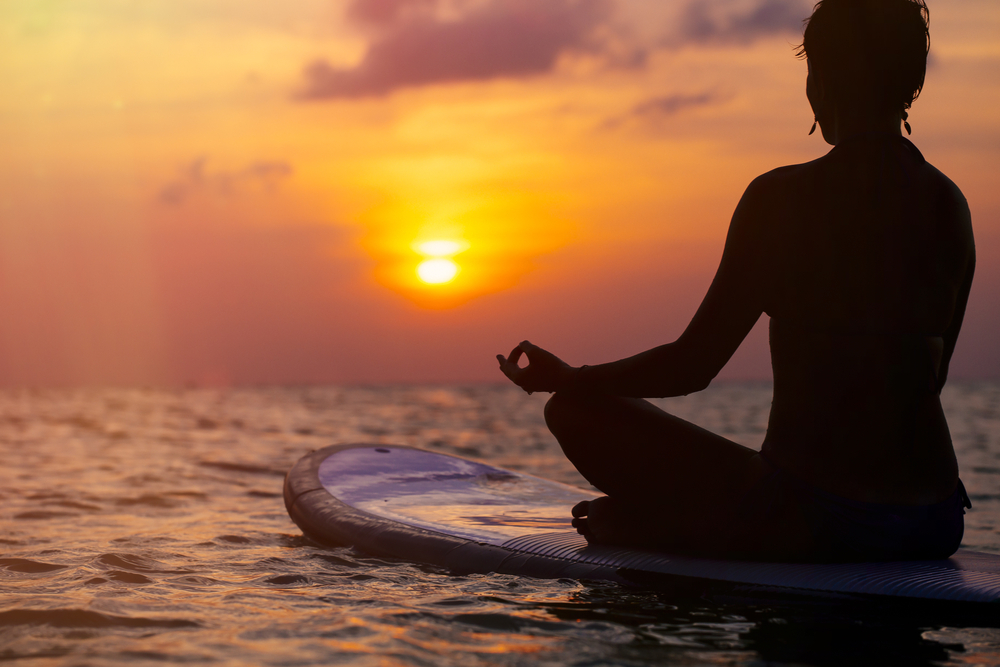
Portugal is packed with great options—Ericeira’s World Surf Reserve energy, Algarve’s softer beaches, Peniche/Baleal’s sandbars, Alentejo’s wild coastline. That’s the good news. The tricky part? Not all weeks, waves, or packages are created equal.
Here’s what tends to trip people up:
- Region vs. reality: “Ericeira sounds amazing,” until a big swell week shows up and every beach break is punching. Meanwhile, a calmer Algarve beach could’ve been perfect for your first green waves.
- Coaching quality is uneven: One retreat offers video analysis and clear progress plans; another just pushes you into whitewater and calls it a day.
- Package fluff: “Unlimited equipment” sometimes means “only during lesson hours.” “Daily yoga” might be one 45-minute stretch. The devil’s in the details.
- Group size vs. learning: A 3:1 water ratio feels safe and focused. A 7:1 session can feel like crowd control.
- Extras that add up: Airport transfers, photo packages, and extra coaching can quietly turn a “deal” into something pricier than you planned.
Two real-world examples I see often:
- The Beginner Mis-match: Booked Ericeira in a heavy-swell week, got intimidated, and spent more time on land than in the water. A soft, sheltered beach in Peniche/Baleal would’ve made the week.
- The Intermediate Plateau: Picked a beautiful retreat, but coaching was generic. No video feedback, no spot selection strategy, no drills—so the turns didn’t click.
“I didn’t know what to ask before booking. Once I saw the student-to-instructor ratio and the surf plan for different wind days, it all made sense.” — a guest I met in Baleal
When you know what to ask—and what to skip—everything gets easier. You want a week that helps you progress without burning out: the right beach for your level, thoughtful yoga that supports paddling shoulders and hips, and a schedule that leaves you smiling, not fried.
What you’ll get from this guide
I’ve built this like a friend walking you through each decision, with zero fluff:
- A step-by-step filter to match your level to the right region, coaching style, and group size.
- A quick-glance checklist of questions that cut through vague marketing—so you know exactly what’s included.
- Insider cues I use when reviewing retreats: gear quality tells, how to read the schedule, and what “progression” really looks like for beginners vs. intermediates.
- Well-being notes backed by research: time in nature (including coasts) is linked with better health and mood when you hit at least 120 minutes per week (Scientific Reports), and yoga supports flexibility, balance, and stress reduction (NCCIH), which is exactly what your surfing shoulders and hips crave.
This isn’t about picking the fanciest venue. It’s about matching you to the right coast, a coaching team you trust, and yoga that keeps you moving well through the week.
Who this is for (and who it’s not)
- Perfect for you if:
- You’re a beginner who wants safe, structured progress on sand-bottom beaches.
- You’re an intermediate chasing cleaner lines, better timing, and your first real turns.
- You’re traveling solo and want an easy, social way to meet people without forced group vibes.
- You’re a couple or small team who wants to surf together—or split levels—without logistical headaches.
- Probably not for you if:
- You want heavy reef breaks daily and zero yoga.
- You’re set on chasing only XXL swells and long paddle-outs.
- You prefer unguided, free-surf missions with max flexibility and minimal structure.
Ready to answer the first big question—whether Portugal really is the right place for a yoga + surf week, and when to go for the conditions you want? That’s up next, along with the gear you’ll actually need (yes, including the wetsuit question you’re already thinking about).
Is Portugal good for a yoga + surf retreat?
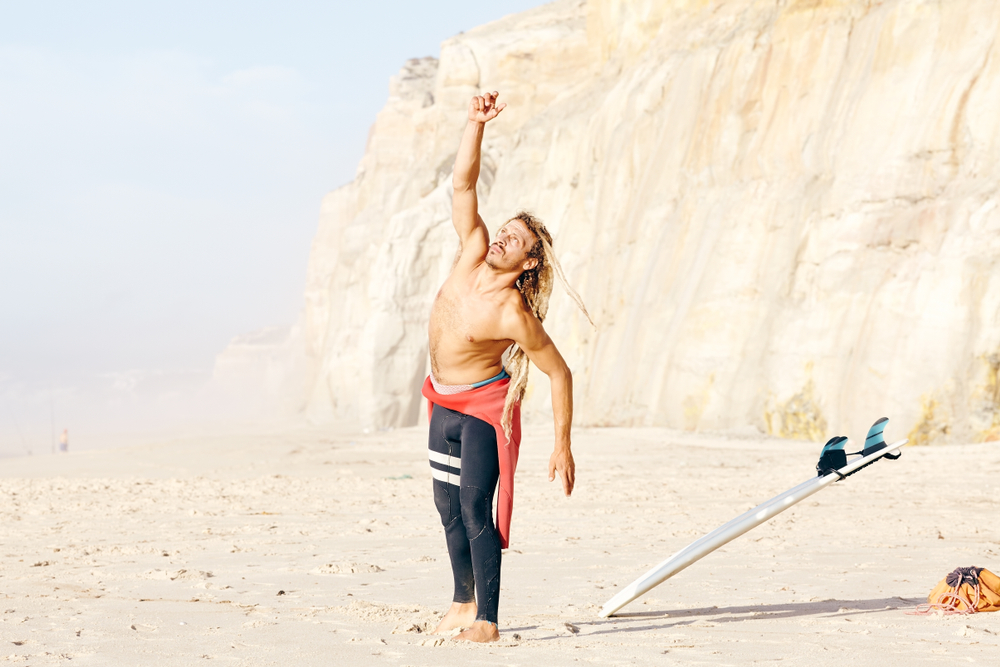
If you want to match your breath to the Atlantic and come home feeling stronger, lighter, and a little salty, Portugal is a yes. You get consistent swell, laid-back coastal towns, and yoga scenes that actually care about alignment and recovery.
There’s pedigree here too. Ericeira is a designated World Surfing Reserve, and beach-rich zones like Peniche/Baleal and the Algarve make it easy to find waves that fit your day’s energy. Add farm-fresh food, friendly prices, and golden light that makes even your board wax look cinematic, and it’s hard to beat.
“You can’t stop the waves, but you can learn to surf.” — Jon Kabat-Zinn
I’ve tested retreats from the Algarve up to the Lisbon coast, and the combo that wins is simple: a mellow yoga flow to prime your body, thoughtful coaching in the water, and time to exhale between sessions. Portugal delivers all three without the stress.
When’s the best time to go?
Short answer: there’s a good month for every level. The Atlantic sends plenty of swell year-round, but each season has a distinct feel. The famous summer northerly wind (locals call it the Nortada) means mornings are your best bet for clean surf, while autumn brings steady lines and warmer sand underfoot.
- Summer (June–September): Smaller, friendlier surf and long, sunny days. Great for first-timers and mellow progression. Expect afternoon winds—most retreats plan morning surfs, then yin or mobility in the evening.
- Autumn (September–November): The sweet spot for intermediates. You’ll see more consistent swell with light winds and still-comfortable air temps. This is when I see the most breakthroughs on turns and timing.
- Spring (March–May): Shoulder-season value with fewer crowds. Conditions swing between playful and punchy; a smart retreat will pick sheltered beaches on bigger days.
- Winter (December–February): Powerful swells and cooler water. Excellent for confident surfers chasing push; some retreats run winter programs in the Algarve for warmer weather and quieter breaks.
For a quick surf-climate snapshot before you book, check a regional guide like MSW/Surfline’s Portugal overview—it mirrors what I see on the ground: friendlier in summer, most reliable in autumn, and punchier through winter.
Do I need a wetsuit, and how cold is the water?
Yes—you’ll want neoprene most of the year. The Atlantic here is refreshing in summer and crisp in winter. Typical sea temps range from about 17–22°C in summer to 14–17°C in winter. The north runs cooler, the Algarve a touch warmer. You can verify current temps with Portugal’s meteorological service (IPMA).
- Summer: 3/2mm full suit does the job for most people; springsuits work on hot days in the Algarve.
- Spring/Autumn: 4/3mm is the sweet spot; pack a 3mm bootie if you get cold easily.
- Mid-winter: 5/4mm with boots; add a hood if you’re surfing early or staying north of Lisbon.
Retreats typically provide suits, but if you’re particular about warmth and fit, bring your own. A good wetsuit turns a chilly session into a joy. If you want a quick cross-check, brands like O’Neill and Rip Curl offer handy wetsuit temp guides that line up well with Portugal’s range.
Extra comfort tips I swear by:
- Earplugs: Reduce cold-water irritation and wind exposure (your future self will thank you).
- Reef-safe sunscreen: Strong sun + reflection off the water = burn risk even on breezy days.
- Rashguard or thermo top: Great under rental suits for warmth and hygiene.
Is it beginner-friendly?
Absolutely—and not in a “you’ll be fighting shorebreak” kind of way. Portugal’s got generous, sand-bottom beaches and sheltered nooks that make first sessions feel fun, not scary. Retreats often run small groups, use soft-top boards, and include land drills that speed up your pop-up and stance. I see total beginners standing on day one all the time, which sets a great mood for the week.
Here are a few beaches where I consistently see smooth first turns and big smiles:
- Baleal (Peniche): A mix of bays and sandbars lets coaches pick the softest peak of the day. It’s a progression playground.
- Amado & Arrifana (Algarve): Amado’s a classic learner-friendly beach; Arrifana has a calm inside section on many days and a postcard backdrop.
- São Julião & Foz do Lizandro (near Ericeira): Sand-bottom stretches with room to spread out when the main points are buzzing.
- Odeceixe (Costa Vicentina): River-mouth vibes with forgiving sections at lower energy—great for confidence building.
In peak season, many of these beaches have lifeguards, and plenty carry the Blue Flag for water quality and safety—one less thing to worry about while you’re practicing your pop-up.
So yes, Portugal is a kind teacher: enough energy to learn, enough variety to progress, and a yoga culture that keeps your body happy between sessions. The only real question now is how to pick a retreat that gets the balance right—coaching that actually helps, yoga you’ll love, and a schedule that fits your pace. Want a simple checklist I use to separate the standouts from the so-so options?
How to choose the right retreat for you
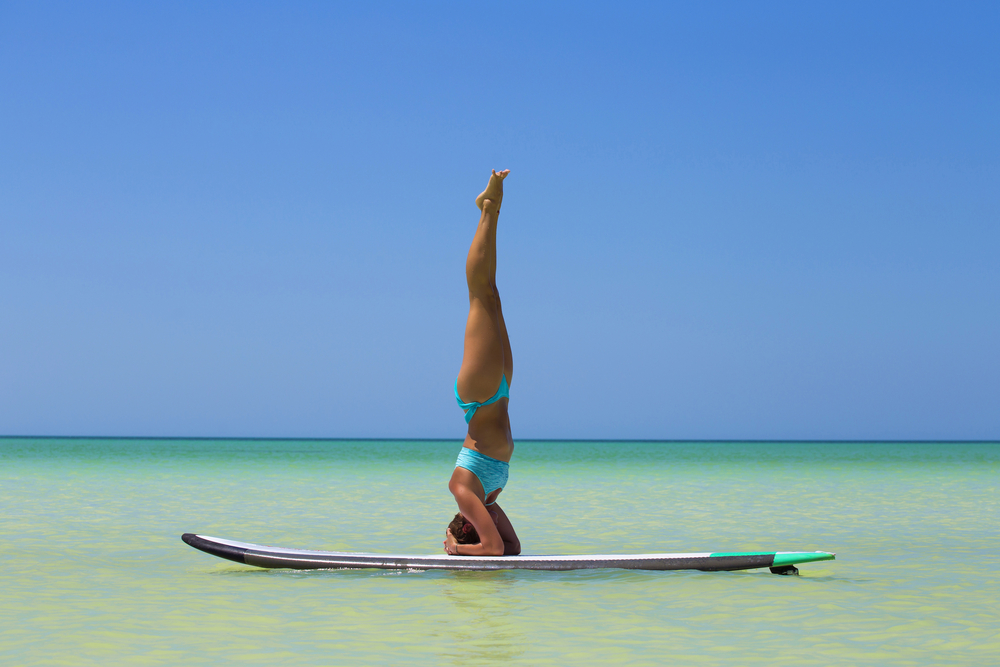
You don’t need the flashiest beachfront deck; you need the setup that fits your level, your energy, and your goals. I look at five levers every time: location access to the right waves, coaching quality, yoga style and schedule, group size, and what’s actually included. Get those right and you progress without burning out.
Key questions to ask before you book
Copy these into your notes, message three retreats you like, and compare answers side-by-side. You’ll spot the right match quickly.
- What’s the surf student-to-instructor ratio? In the water, 1:4–1:6 is the sweet spot. On-land coaching can stretch to 1:8.
- How many yoga classes per day and what styles? Aim for a stronger morning and a restorative evening option.
- Is surf equipment available all day or just during lessons? If you plan free-surf sessions, confirm hours and fees.
- Are airport transfers, meals, and surf photos included? Ask for a clear inclusions list to avoid add-on creep.
- What’s the cancellation policy? Flexible terms (e.g., free changes 14–30 days out) are a green flag.
- How do you split beginners and intermediates? Separate groups keep everyone progressing.
- What safety certifications do coaches hold? Look for ISA coaching and lifeguard credentials.
- What are your backup spots when wind or swell shifts? Specific answers (nearby beach breaks by orientation) beat “we’ll see.”
- Do you use video analysis and land drills? Structured feedback accelerates learning.
- What’s the vibe and group size? Under 12 feels supportive; 14–20 is more social.
“The ocean teaches you, but a good coach translates.”
Yoga styles and daily rhythm
Match the mat to the waves. The right yoga keeps joints happy, paddling strong, and your head calm when sets roll in. Here’s what typically works well on a yoga + surf retreat in Portugal:
- Vinyasa or Hatha in the morning for heat, core, and balance. There’s solid evidence yoga improves flexibility and balance—great for pop-ups and trim. See early research on Hatha yoga and physical fitness: J Strength Cond Res.
- Yin or Restorative in the evening to shift into recovery mode. Slower work supports the parasympathetic “rest and digest” response, which is linked with lower stress and better sleep. Systematic reviews suggest yoga reduces anxiety and stress markers: Cramer et al.
- Props and spaces: Ask about blocks, straps, bolsters, and whether sessions can move indoors on windy days or outdoors at sunrise.
- Options to modify or skip: After punchy sessions at beach breaks, having a gentler alternative (mobility, breathwork) saves shoulders for tomorrow.
Real-world example: on a small farm stay near the coast, morning Vinyasa targeted shoulders and hips for paddling; evenings rotated Yin and gentle mobility. The result? Guests showed smoother, quicker pop-ups by midweek, with fewer “stuck at the hips” moments.
Surf coaching that actually helps
Not all “two-hour lessons” are created equal. Look for coaching that’s structured, evidence-backed, and tailored to the day’s conditions.
- Video analysis: Filmed sessions, followed by short review, help you see stance, timing, and rail engagement. Feedback is a cornerstone of motor learning—well-supported in sports science literature: PubMed overview on feedback and skill learning.
- Land drills: Pop-up mechanics, stance adjustment, and paddle technique on land lock in movement patterns before you hit the lineup.
- Spot selection: Beach breaks with sand bottoms are best for learning; save reefs and points for confident surfers.
- Briefings and debriefs: Good sessions start with currents, rips, and hazards; end with two or three clear takeaways.
- Cues you can use: External-focus cues (“eyes to the shoulder of the wave,” “press the front rail”) consistently beat overthinking biomechanics. Strong support here: Wulf, attentional focus review.
- Ratios and rotation: Coaches should rotate through students in the water, giving targeted tips every few waves, not just pushing boards.
I still remember watching a nervous beginner stand on their first green wave after a 10-minute land session focusing only on foot placement and where to look. Consistent cues and the right sandbank made all the difference.
Food, rooms, and the group vibe
Progress isn’t just about sets and sun salutations. It’s also about recovery, sleep, and the crowd around the dinner table.
- Menus that fuel you: Plant-forward with local fish and whole grains is the norm. Ask about post-surf protein (20–30g is a smart target for muscle repair; see the ISSN position stand). Confirm dietary options if you’re vegan, gluten-free, or dairy-free.
- Hydration and electrolytes: Salty sessions call for more than water. Good retreats set out fruit, nuts, and electrolytes after coaching.
- Rooms that match your energy:
- Want quiet mornings? Choose a private room, smaller groups (6–10), and countryside settings.
- Want a social scene? Go for shared rooms, 14–20 guests, and walking distance to cafés and breaks.
- Spaces to reset: Look for a chill lounge, hammocks, or a garden; recovery corners (rollers, massage balls) are a bonus.
- Accessibility and ease: If stairs or steep paths are tricky, ask about ground-floor rooms and easier beach entries.
One simple test I use: can I picture myself lingering after dinner because the conversation is good? If yes, that’s a retreat where people go home with new friends, not just new turn technique.
Quick matchmaker
- Progress-focused intro or intermediate: Small group, 1:4–1:6 surf ratios, daily video, morning Vinyasa + evening Yin.
- Chill-first beginner: Gentle beach breaks, two surf days on/one off, soothing evening classes, flexible attendance.
- Social traveler: Medium–large groups, communal dinners, optional extra sessions, easy walk to town.
Curious what this level of coaching and care usually includes—and how to avoid paying for extras you won’t use? That’s exactly what I unpack next, with real price ranges and smart ways to save without cutting the good stuff.
Costs, budgets, and what’s included
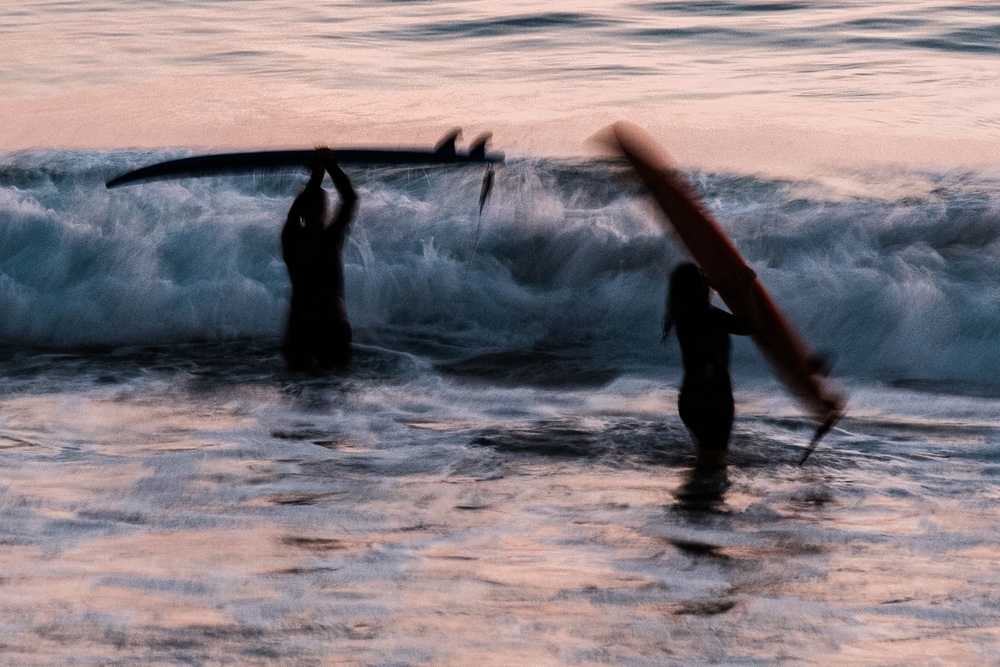
“Spend where it lifts your experience, not where it just looks good on a brochure.” I’ve learned that the hard way (hello, overpriced “photo package” from 2017). The good news: Portugal is one of the best-value places in Europe to do yoga and surf without torching your savings, and you can control costs with a few smart choices.
Typical prices you can expect
For a 5–7 night yoga + surf retreat in Portugal, here’s what I see consistently when I review booking pages and talk to owners on the ground:
- Shared room (5–7 nights): €450–€900 total, usually with daily yoga, 4–6 surf lessons, breakfast, and gear during lessons.
- Private room: €800–€1,600 in most coastal hubs; boutique stays with full-board often land between €1,700–€2,800.
- Peak season bump (June–Sept): expect +10–30% on rates, especially in Ericeira and the Algarve.
- Shoulder season deals (spring and late autumn): 10–20% lower prices are common; some retreats add an extra yoga class or a bonus coaching session to sweeten the pot.
Rule of thumb: plan on €85–€180 per person per day depending on room type, meal plan, and extras. If you see numbers wildly outside that, check what’s actually included.
What’s usually included vs. add-ons
Inclusions vary, but most Portugal retreats keep it refreshingly transparent. Still, details matter:
- Often included
- Daily yoga (1–2 classes) with mats and props
- Group surf lessons (4–6 across the week) + soft-top board + wetsuit for the lesson window
- Breakfast or brunch; coffee/tea and fruit
- Use of common spaces, yoga shala, Wi‑Fi
- Some offer airport or town transfers on set days
- Usually extra
- Board/wetsuit rental outside lesson times: €10–€25 per day each (ask about multi-day discounts)
- Private surf coaching or video analysis: €40–€120 per session
- Massages/bodywork: €45–€90 for 60–90 minutes
- Photo/video packages: €30–€80
- Lunch and some dinners: €10–€20 for a cafe meal; €20–€35 at a nice spot
- Airport transfers: Lisbon–Ericeira ~€60–€90; Lisbon–Peniche ~€70–€110; Faro–Lagos ~€80–€120 (each way, car)
- Municipal tourist tax: €1–€2 per person/night in some areas (usually collected on arrival)
- Insurance: some retreats offer optional sports coverage for ~€15–€40/week
One quirk to watch: some camps include “free surf” gear all day, others restrict it to lesson windows. If you’re itching to paddle out twice a day, that distinction is worth real money.
Quick sample budgets (7 nights)
- Shoestring, shared room
- Retreat package (shared, breakfast, 5 surf + daily yoga): €550–€700
- Transport (bus/train to coast + local taxi): €25–€60
- Lisbon–Ericeira bus ~€7–€9 (Mafrense from Campo Grande)
- Lisbon–Peniche bus ~€9–€14 (Rede Expressos)
- Lisbon–Lagos train ~€23–€30 (Comboios de Portugal)
- Meals not included: €140–€210
- Extras (1 massage or photo pack): €50–€80
- Total (excluding flights): ~€770–€1,050
- Smart mid-range, private room
- Retreat package (private, breakfast, 5–6 surf + yoga): €1,000–€1,400
- Airport transfers round-trip: €120–€180 (or save with bus/train)
- Meals not included: €180–€280
- 2 extras (massage + private coaching): €120–€200
- Total: ~€1,420–€2,060
- Treat-yourself boutique
- Retreat (private, most meals, smaller groups): €1,700–€2,600
- Selective extras: €150–€250
- Total: ~€1,850–€2,850
Real-world examples I see often
- Ericeira, shared room in a social surf house: €590–€790 for 6 nights with breakfast, 5 surf, daily yoga. Peak weeks nudge the top end.
- Peniche/Baleal, private room mid-range: €950–€1,250 for 7 nights, breakfast, 5–6 surf, daily yoga, sometimes with video review.
- Algarve, winter-sun special: €520–€750 for 7 nights shared, breakfast, 5 surf lessons, 1–2 yoga classes/day. Water’s cooler, prices are kinder.
Hidden costs to ask about (so you don’t get stung)
- Is gear included outside lesson times or only during classes?
- Student-to-coach ratio and whether you’ll be split by level (value = progress)
- Cancellation terms and whether deposits are transferable
- Board damage policy and security deposits (common for hard boards)
- Card payment fees on arrival (some charge 2–3%)
- Whether VAT (IVA) is included (in Portugal it usually is, but confirm)
Ways to save money without cutting the good stuff
- Go shoulder season (spring or late autumn) for lower rates and calmer lineups.
- Choose shared rooms if you’re social; private room supplements are often 25–40%.
- Book early-bird (5–15% off) or look for last-minute fill-the-gap deals a week out.
- Bundle coaching upfront. Extra sessions à la carte can be pricier than a “progression pack.”
- Use public transport from the airport:
- Eat local: pastelaria breakfasts are €3–€6; fresh fish “prato do dia” €10–€15.
- Pack a rashguard and reef-safe sunscreen so you’re not paying beach prices.
How pricing actually works (so you can negotiate smartly)
Occupancy and waves move prices. Owners tell me peak weeks fill first with privates, then shared rooms. If you’re flexible by a week or two, you can often snag a better room for less. Many retreats keep 20–40% deposits, with the balance on arrival. Ask about date changes—some will let you roll your deposit forward once if you give enough notice.
Industry-wide, European hospitality saw higher input costs the last few years (energy, food). Portugal has kept increases moderate compared to Western Europe, which is one reason value here is still strong. Translation: the “middle tier” is where the magic is—great coaching, nice rooms, no fluff.
What’s worth the splurge (and what isn’t)
- Worth it: smaller surf groups, video analysis, consistent coaching team, evening mobility/Yin, and a location that puts you near multiple beach options for changing winds.
- Think twice: paid extras you won’t use when you’re surf-tired (daily workshops you might skip), and unlimited free-surf gear if the break outside is too advanced for your level.
If your budget had a voice, it would say: “Give me coaching and rest—skip the shiny extras.” The waves—and how you feel in your body—are what you’ll remember a month from now.
Want to stretch your euros further by picking the right coast for your level and vibe? Next up, I break down the best regions in Portugal—who they suit, the mood, and yes, the likely price bands. Where do you see yourself paddling out first: a mellow Algarve bay or Ericeira’s world-reserve energy?
Best regions in Portugal (and who they suit)
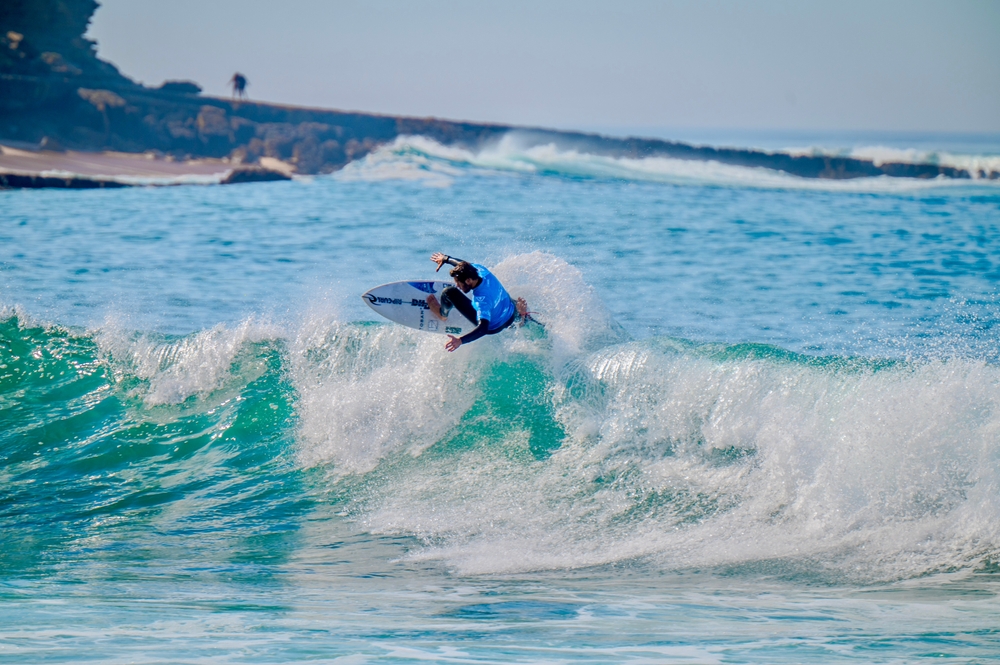
“The right coast feels like a deep exhale—where the wave you catch matches the breath you take.”
Portugal isn’t one-size-fits-all. Each coast has its own rhythm, crowd level, and wave personality. Here’s how I match guests to the right region so the yoga feels nourishing and the surf fits your level from day one.
Ericeira: World Surf Reserve energy
Just 45–60 minutes from Lisbon, this charming fishing town is Europe’s first World Surfing Reserve, celebrated for its high-density quality breaks. Expect a lively surf-town feel, great cafes, and a big choice of schools.
- Level sweet spot: Intermediates chasing progression. Beginners can score friendly days at Foz do Lizandro or São Julião when the swell is smaller.
- Typical surf: Consistent Atlantic energy with a mix of reefs and beach breaks. Names you’ll hear: Ribeira d’Ilhas (long rights), Coxos (advanced), Praia do Sul (when it’s tidy).
- Yoga & wellness vibe: Lots of studios offering Vinyasa in the morning, Yin at sunset. Many retreats use indoor shalas plus deck spaces for salty evening stretches.
- Extras I love: Coastal runs on the clifftops, espresso at pastelarias between surfs, and sunset at Furnas viewpoint.
- Good-to-know: It can get busy near town. Smart retreats time sessions around tides and crowds or shuttle to quieter nooks—you’ll feel the difference in your wave count.
Algarve: Sun, coves, and relaxed pace
Down south, the Algarve doubles your options: the wild west coast and the sheltered south coast. When the west gets punchy, the south often lines up smaller, cleaner waves—great for learners. Warmer water and mellow sunsets don’t hurt, either.
- Level sweet spot: First-timers and anyone who wants warm(er) water and variety. Also a winter favorite when the rest of Europe is chilly.
- Typical surf: West coast (e.g., Arrifana, Amado, Castelejo) for longer period swells; south coast (e.g., Mareta, Meia Praia) for sheltered, smaller days.
- Yoga & wellness vibe: Slow mornings, outdoor decks, and golden-hour Yin. Expect plant-forward menus and garden hangouts between sessions.
- Extras I love: Hikes on the Rota Vicentina, sea caves near Lagos, and sunset viewpoints at Ponta da Piedade.
- Good-to-know: Faro Airport access is easy. If you’re chasing calmer conditions, retreats that can shuttle you coast-to-coast are clutch.
Peniche/Baleal: Sandbars for all levels
Peniche is a peninsula of shifting sandbanks, and Baleal’s twin bays face different directions—so you can almost always find a wave that fits the day. It’s where I send people who want consistent, coached progression.
- Level sweet spot: Absolute beginners to advancing intermediates. Coaches can walk you 200 meters and show a totally different setup—super helpful for confidence.
- Typical surf: User-friendly peaks in Baleal Bay; heavier barrels at Supertubos when it’s on (that’s where the big comps roll through—see WSL).
- Yoga & wellness vibe: Calm, practical, and recovery-focused—think shoulder mobility after two surfs and lots of legs-up-the-wall.
- Extras I love: Photo/video analysis on those tidy sandbars. Few things boost learning like seeing your stance from the side.
- Good-to-know: It’s flat-and-functional rather than quaint. If you want cute-town charm, stay in Baleal village or nearby guesthouses with cozy communal spaces.
Alentejo & Costa Vicentina: Wild and quiet
North of the Algarve, this stretch feels untouched. Fewer people, big skies, rolling dunes, and fishing villages where time slows down. If you want nature to set the pace, this is your spot.
- Level sweet spot: Beginners who like space and patient coaching; intermediates seeking uncrowded peaks and long paddles that double as meditation.
- Typical surf: Sandy-bottom beaches like Malhão, Amoreira, Monte Clérigo, and the iconic river-mouth vibe of Odeceixe on the border with the Algarve.
- Yoga & wellness vibe: Rustic-luxe farm stays, wooden decks under pine trees, and communal dinners with local produce.
- Extras I love: Coffee in Vila Nova de Milfontes, fresh-caught fish in Zambujeira do Mar, and long, empty beaches where a sunrise stretch feels sacred.
- Good-to-know: Infrastructure is lighter. That’s the charm. Choose retreats with their own transport and flexible coaching plans.
Azores or Madeira: Off-path adventure
Volcanic islands with dramatic scenery, hot springs, and moody weather windows. When it clicks, it’s unforgettable. When it doesn’t, you practice patience—and your hip openers.
- Level sweet spot: Adventurous travelers (intermediate+) comfortable with change. There are friendly beach spots—like Porto da Cruz in Madeira or Santa Bárbara on São Miguel—but reefs and cobblestone points are common.
- Typical surf: Powerful Atlantic lines, lots of basalt underfoot. Summer can be mellow; shoulder seasons bring more push. Check official resources like IPMA for weather and swell trends.
- Yoga & wellness vibe: Nature-first. Think clifftop flows, cloud forests, and post-surf soaks. The scenery alone lowers your shoulders.
- Extras I love: Hot springs at Furnas (Azores), levada walks in Madeira, and tea plantations in São Miguel. See Visit Azores and Visit Madeira for trail ideas.
- Good-to-know: Cars are essential and conditions can flip fast. Good guides will pivot your plan—yoga first, surf later, or vice versa—so you’re in the right spot at the right time.
Quick tip from the booking trenches: match your energy to the region. If you want buzz and options, go Ericeira or Peniche/Baleal. If you want softer days and sunsets, try Algarve. If you crave space and silence, Alentejo sings. If you want adventure and don’t mind plan B, the islands reward big.
Want to know how a real day unfolds once you land—right down to the first stretch, the best tide window, and the evening Yin that resets your shoulders? I’ll walk you through a sample day next so you can almost feel the wax under your feet.
What a week actually looks like
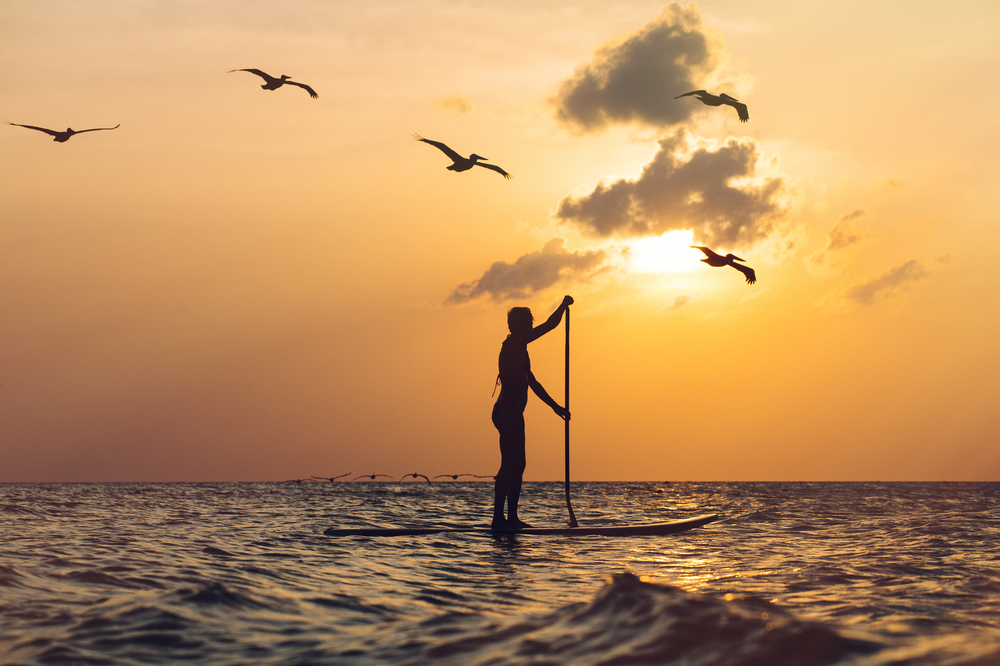
Here’s the honest, sand-between-your-toes version of a retreat week. Not brochure-perfect—real. You’ll move, rest, and steadily build confidence so you’re not wrecked by Wednesday or restless by Friday.
“The ocean meets you where you are; your job is just to show up.”
A sample day on retreat
Most places follow a rhythm designed to match tides and energy. It feels good in the body, and—bonus—lines up with how motor learning actually sticks.
- 07:15 — Sunrise mobility or meditation (15–25 mins). Short, gentle, and surprisingly powerful for setting the day’s headspace. Slow breathing has been shown to boost HRV and calm the nervous system (Zaccaro et al., 2018).
- 08:00 — Breakfast. Think oats, eggs, fruit, and Portuguese coffee. Pack a banana and a bar for after your session.
- 09:00 — Surf briefing: wind, tides, safety, where to sit in the lineup. Coaches mark your goals for the day—simple, measurable, personal.
- 10:00–12:00 — Surf lesson with coaching. Expect land drills first (pop-up cues, stance), then a focused session in the water. Video clips if the waves allow.
- 12:30 — Lunch + chill. Nap, journal, or wander to a viewpoint. The “break” matters; sleep and downtime help your brain consolidate skills (Walker & Stickgold, 2004).
- 16:30 — Yin or mobility. Hips, thoracic spine, shoulders—exactly where surfers tighten up. Yoga improves balance and flexibility, which translates to better board control (Ko et al., 2015).
- 18:00 — Optional sunset surf or coastal hike, depending on swell and how your body feels.
- 20:00 — Communal dinner. Story swap, laughter, and the day’s highlight reel. If there’s video analysis, you’ll get 10–15 seconds of gold to work on tomorrow—video feedback is a proven accelerator for skill learning (Sors et al., 2017).
- 21:30 — Stargaze, hot tea, early night. You’ll sleep like a rock.
Pro tip: pack a quick-dry towel, zinc sunscreen, earplugs, and a small thermos. Nothing beats a hot post-surf tea on a breezy Atlantic cliff.
Beginner vs. intermediate tracks
Good retreats split groups so everyone gets the right level of challenge. The goal isn’t to chase big waves; it’s to stack small wins until something clicks.
- Beginners
- Focus: pop-up timing, stance, straight-line rides to trimming, whitewater to small green waves.
- Drills that work: step-through to full pop-up progression on land; “two paddles then pop” timing; triangle paddling path to avoid traffic.
- Board + spot: soft-tops, waist-to-chest water, sand-bottom peaks with a gentle push.
- Targets: 10+ attempts per session, 3–5 clean rides standing, 1–2 green waves by midweek if conditions behave.
- Why it sticks: high-rep practice with clear feedback beats random flailing, every time.
- Intermediates
- Focus: reading peaks, positioning, angled takeoffs, trimming lines, first bottom/top turns.
- Drills that work: “three-stroke commit” rule to stop hesitating; look-lean-lead for turns; shoulder-line cue so you stop over-rotating.
- Tools: channel entry/exit to save energy, video review for takeoff angle and stance width, smaller groups at the best bank.
- Targets: 8–12 quality waves per session, one purposeful turn per ride by day four, consistent selection under changing tides.
- Why it sticks: structured feedback and a wave plan. You’ll stop chasing every lump and start choosing on purpose.
Real-world snapshot: on a windy Tuesday last fall, Ana (new to surfing) stood up for the first time on wave eight after switching to the “two paddles then pop” cue. An hour later? Five rides to the shore and a grin that didn’t quit.
Rest, recovery, and extras
If you go hard every session, you’ll fade. If you layer recovery smartly, you finish the week better than you started—physically and mentally.
- Plan one lighter day: Midweek is perfect. Swap a second surf for a long Yin class, coastal walk, or market visit. Your shoulders will thank you.
- Breathwork: 5 minutes of slow nasal breathing post-surf helps downshift your nervous system and kickstart recovery (Zaccaro et al., 2018).
- Cold-water/ice: Short bouts (5–10 minutes total after sessions) can reduce muscle soreness—useful when the week stacks up (Cochrane Review: Bleakley et al., 2012).
- Massage and mobility: Great for hotspots—pec minor, lats, hip flexors. Even a lacrosse ball session in your room works wonders.
- Blue-mind effect: Time near water correlates with better mood and reduced stress (White et al., 2013). Translation: a quiet look at the tide can be as restorative as a nap.
- Alternatives when the ocean’s moody: SUP on a river, cliff trails, farm-to-table tastings, thermal baths, or a photo workshop at sunset. You’ll still go to bed smiling.
The weekly arc (so you can pace yourself)
- Day 1: Arrival, settle in, gear fitting, gentle stretch, early night.
- Day 2–3: Technique build. Higher reps, focused goals, first video snapshots.
- Day 4: Lighter or rest morning. Mobility and a short, playful surf later if you feel good.
- Day 5: Progress day. You apply the week’s cues; coaches fine-tune positioning.
- Day 6: Adventure session—sunrise glass or golden-hour peelers. Photo ops and big smiles.
- Day 7: Farewell flow, coffee with new friends, transfer out.
Pack smart for this rhythm: a second rashguard (so one’s always dry), small snacks, electrolytes for sunny days, and a notebook for “aha” moments. Tiny habit, huge gains.
Curious which airport lines up with this schedule and how to get from baggage claim to that first salty breeze without stress? I’ve got you—next up I’ll map the easiest routes, transfers that actually show up, and the pack list that keeps your bag under airline limits without skimping on comfort.
Logistics made easy: flights, transport, packing
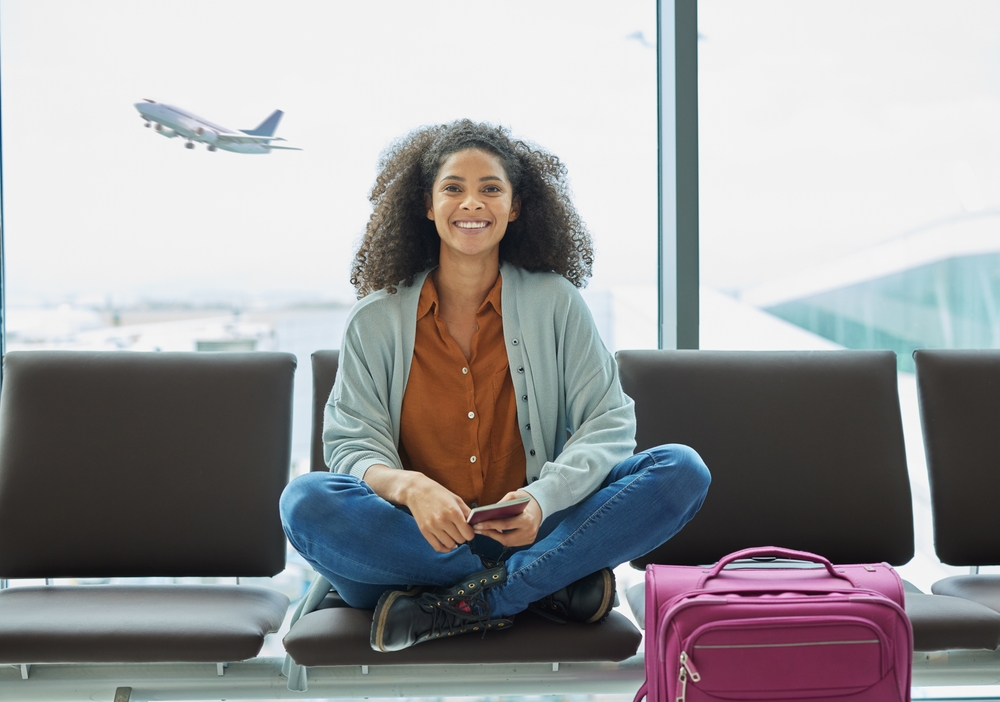
I want you landing in Portugal relaxed, not guessing at buses or wondering if your board will make it. Here’s the practical stuff I use and recommend—so you can spend your energy on sets and savasana, not spreadsheets.
“Pack light, plan smart, and let the Atlantic handle the rest.”
Which airport should I fly into?
Pick your airport based on where you’re staying. It’s the simplest way to save time and money.
- Lisbon (LIS): Best for Ericeira and Peniche/Baleal.
– LIS → Ericeira: ~45–60 min by car; ~75–90 min by bus from Campo Grande.
– LIS → Peniche/Baleal: ~80–100 min by car; ~1.5–2.5 hrs by bus with Rede Expressos or FlixBus. - Faro (FAO): Best for the Algarve (Lagos, Sagres, Aljezur).
– FAO → Lagos: ~60–75 min by car; ~1h45 by train with CP – Comboios de Portugal.
– FAO → Sagres: ~1h20 by car (buses run but connections are slower). - Porto (OPO): Ideal for the north (Matosinhos, Esposende, Viana do Castelo).
– OPO → Matosinhos: ~25–35 min by metro/car; great if you want a quick ocean fix after landing.
Extra tips that save headaches:
- Board bags on budget airlines: Policies change; book “sports equipment” in advance and screenshot your receipt. Arrive 30–45 minutes earlier than usual for oversize drop-off.
- Midweek flights: Tuesdays and Wednesdays often price lower and keep you out of weekend queues.
- Buffer time: If you’re landing the same day your retreat starts, aim for a morning/early afternoon arrival—oversize baggage can add surprise delays.
Getting around without stress
Retreats can arrange airport transfers (often the smoothest option). If you’re DIY-ing it, here’s what actually works:
- Public transport: Reliable between hubs.
– Trains: CP covers Lisbon ↔ Faro/Porto; the Alfa Pendular is the fast one.
– Buses: Rede Expressos and FlixBus reach Ericeira, Peniche, Lagos, and beyond. - Ride-hailing: Uber and Bolt are everywhere in Lisbon, Porto, and the Algarve. They’re great for airport-to-terminal hops (e.g., Lisbon Airport → Campo Grande bus station).
- Car rentals: Affordable, especially off-season.
– Ask for a Via Verde transponder for toll roads (especially the A22 in the Algarve, which uses electronic tolls).
– Take photos of the car, note fuel policy, and check for a spare tire—rural parking can be sandy. - Local nuance: For Ericeira, there’s no train—bus from Lisbon’s Campo Grande is your friend. For Sagres, connections are slower; a car makes life easier if you plan to beach-hop.
What to pack for surf and yoga
Most retreats include boards, wetsuits, mats, and props. Bring your own if you’re picky about fit or hygiene. Here’s the pack list I actually use:
- Surf essentials
- Rashguard or surf leggings (sun + chafe protection)
- Reef-safe SPF 50 sunscreen and zinc stick for face/lips
- Booties in colder months or for rocky entries
- Earplugs (I like Doc’s ProPlugs) to protect against surfer’s ear
- Quick-dry towel or poncho, small bar of wax (cool/cold), fin key + spare leash string
- Waterproof dry bag for phone/keys
- Yoga + recovery
- Lightweight yoga wear and a mat towel (most places have mats; towel keeps things fresh)
- Yoga strap (handy if you’re tight after long paddles)
- Massage ball or mini-roller, magnesium spray, and electrolytes
- Clothes + comfort
- Windbreaker, warm layer for evenings, and comfy slides
- Swimsuit or two (rotation = always dry)
- Reusable water bottle (many retreats have refill stations)
- Tech + travel
- Type C/F plug adapter (Portugal is 230V) and a power bank
- Offline maps and an eSIM (Orange Holiday Europe or Airalo work well)
- Copies of ID, insurance, and booking info backed up to the cloud
Bringing your own board? Keep it alive:
- Use pipe insulation on rails, bubble wrap on nose/tail, and remove fins (or use padded fin boxes if fixed).
- Stuff soft items (towels, wetsuit) around the board inside the bag; avoid hard objects near rails.
- Check your airline’s “sports equipment” page before booking—fees vary and size limits matter.
Health, safety, and insurance
A little prep goes a long way so you can play hard and recover well.
- Insurance: Choose a policy that explicitly covers surf lessons and personal sports equipment. Popular picks include World Nomads, SafetyWing, and True Traveller (UK/EU)—look for the “adventure sports” add-on. EU citizens should carry a GHIC/EHIC.
- Lifeguards and flags: Green = good, yellow = caution, red = no swimming. Black-and-white chequered flags mark surf craft zones. If in doubt, ask the nadador-salvador (lifeguard) on duty.
- Emergency number: 112 in Portugal (works for medical, fire, and maritime emergencies).
- Sun + skin: The Atlantic breeze hides burn time—reapply SPF every 2 hours and after sessions. A surf hat and long-sleeve rashguard are underrated superpowers.
- Water quality: Portugal scores strongly in the EU Bathing Water reports, and hundreds of beaches carry the Blue Flag for water quality and safety—look for the blue flag at the access point or check Blue Flag before you go.
- Simple habits: Warm up shoulders/hips, hydrate (electrolytes help), and rinse ears after sessions. If you’re tired, choose the mellow peak—progress comes from consistency, not heroics.
One last thing: don’t overpack. You’ll re-wear favorites, and laundries are easy to find. Travel lighter, move easier, and leave room for a local cork yoga block or a Portuguese towel you’ll actually use at home.
Thinking about going solo, bringing your partner, or rallying a crew—and how that changes room types, surf pairings, and social vibes? That’s exactly what I’m unpacking next. Who are you coming with?
Going solo, as a couple, or with friends
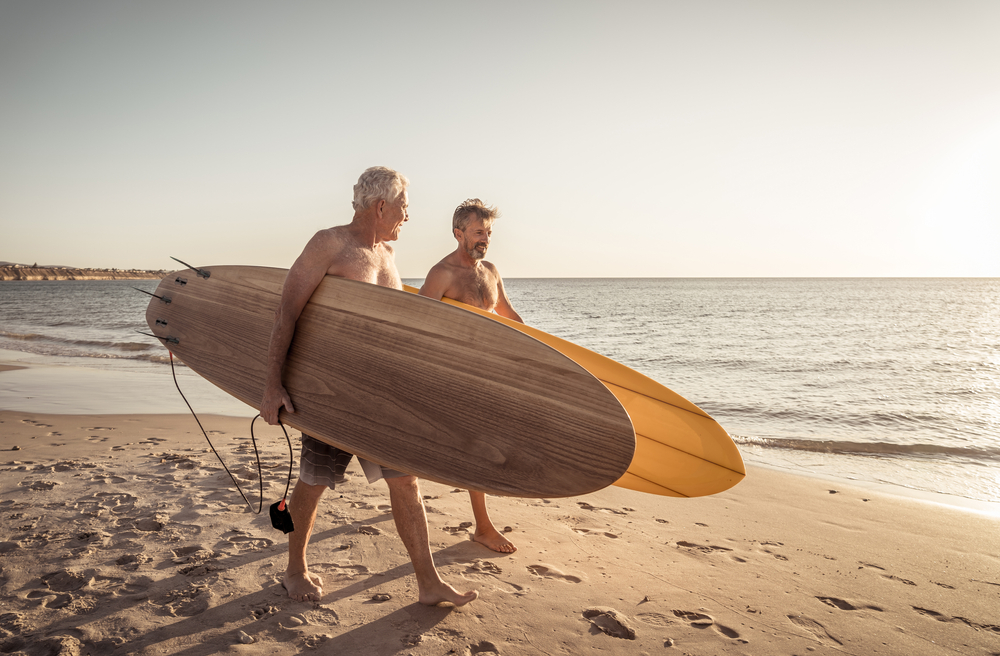
I’ve watched Portugal’s yoga-and-surf scene turn strangers into breakfast buddies, surf partners, and sometimes lifelong friends. The magic isn’t just in the waves—it’s in the design of the day: shared meals, small coaching pods, and mellow downtime that makes it easy to talk without forcing it.
Short answer: yes. Portugal consistently ranks among the safest countries in Europe on the Global Peace Index, and retreat towns like Ericeira, Peniche/Baleal, and much of the Algarve feel welcoming, walkable, and relaxed—especially for solo women.
Retreats lean social without being pushy. Think communal tables, group surf check-ins, and optional sunset hangs. Most places I review tell me a majority of guests come solo, and you feel that in the vibe—easy intros, zero cliques.
“I came alone and left with five people to message surf forecasts with.” That’s the comment I read most often in my notes.
If you’re weighing the social side, a few evidence-backed nudges: group movement settings tend to boost mood and connection (one study found group exercise cut perceived stress by around a quarter), and surf therapy research points to improved wellbeing and social support after just a few sessions. Translation: you’re primed to feel good and meet people here.
Solo-smart choices I look for when I review:
- House size under ~14 beds: small enough to learn names by day two.
- Buddy systems in the water: instructors who pair people by level build instant camaraderie.
- Communal dinners most nights: conversation flows when you’re not hunting for restaurants solo.
- Female-only or mixed shared rooms: ask what’s available and how roommate matching works.
- Walkable location: being near a café strip or boardwalk removes friction for solo exploring.
- WhatsApp group pre-arrival: great retreats set one up so you have a hello waiting at check-in.
Real example: In a Peniche villa I reviewed last spring (8 guests total), two solo women were matched in a twin room, ended up in the same surf pod, and were co-analyzing each other’s pop-ups on video by night two. When the wind switched, the coaches moved the group to a protected bay—same vibe, better waves, everyone still together.
Couples and groups: how to choose well
Traveling with a partner or a crew? The best retreats give you “together time, separate progress.” That means you can share a room and meals, then split by level for surf and meet again for Yin at sunset.
What I ask for couples:
- Bed setup: confirm a true double or king (not two singles pushed together).
- Synchronized schedules: request the same surf time even if you’re at different breaks.
- Couples-friendly add-ons: side-by-side massages, private photo session, or a sunset picnic.
- Quiet hours: if you’re early-to-bed, make sure the house isn’t party-centric.
Snapshot: In Ericeira, one lodge I inspected ran two vans—one for beginner beachies, one for mellow points—then reunited everyone for dinner. A couple I chatted with loved the split: she leveled up on green waves while he chased longer rides, and they met back on the deck for grilled sardines and a glass of Vinho Verde.
For groups (4–10 people), I’d check:
- Exclusive buy-out options: locking the whole house often doesn’t cost much more per person.
- Capacity and ratios: confirm max group size in the water and coach-to-student ratios.
- Private sessions: request a group-only yoga flow or a dedicated video-analysis evening.
- Transport logistics: two vans are worth it if you’ll split levels or chase different wind angles.
- Group dinners: ask about a chef night or seafood BBQ to keep the gang together.
- Connectivity: if some of you work remotely, request a speed test screenshot (50 Mbps+ is a good minimum).
Quick win: In the Algarve, a group of six remote workers I visited had early Vinyasa, 10 a.m. surf, then quiet hours 2–5 p.m. for calls. The lodge moved yoga to the rooftop when the wind allowed and hosted a private cataplana dinner on the last night. Smooth and memorable.
Inclusivity and accessibility
Good retreats in Portugal are genuinely welcoming—different ages, body types, and backgrounds share the same space. The key is to tell the team what you need early so they can set you up right.
If you have mobility needs:
- Property layout: ask about ground-floor rooms, ramped entries, and bathrooms with grab bars.
- Beach access: many beaches have boardwalks; some municipalities run “accessible beach” programs with amphibious chairs and assisted water entry during summer lifeguard hours.
- Adaptive surfing: Portugal has instructors trained for adaptive sessions; retreats can often arrange ISA-certified support, soft-tops, and extra handlers.
Food and allergies:
- Dietary options: vegan, vegetarian, dairy-free, and gluten-free are commonly accommodated.
- Cross-contamination: if you’re celiac or highly sensitive, ask about separate prep stations and labeled storage.
Age, pace, and recovery:
- Choose the rhythm: look for morning flow + evening Yin, with the freedom to skip sessions guilt-free.
- Recovery tools: mats, blocks, straps, foam rollers; some places add sauna/cold dips or breathwork.
LGBTQ+ travelers: Portugal is broadly LGBTQ+-friendly. If you want a private room or specific roommate setup, just say it straight—staff here are used to making that easy.
My quick inclusivity litmus test: when I ask a retreat how they’d adjust for a guest with a knee issue or a plus-size wetsuit need, I want a clear, practical response—alternative poses, soft-top boards, sizing in stock, and a plan for beach entries. If they’re specific, you’re in good hands.
Ready to fine-tune your pick? Before you lock dates, I keep a tight checklist of red flags and smart questions that saves people money, hassle, and a whole lot of “wish I’d asked that.” Want that list next?
Final checks before you book
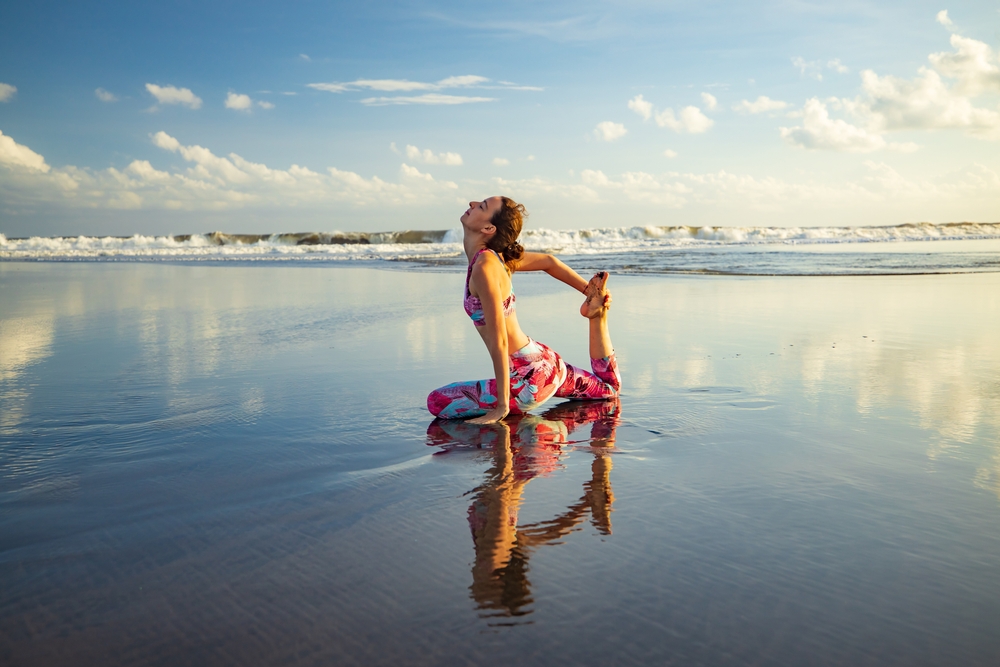
Before you hit “pay now,” run through this quick sanity check. It’s the difference between an easy, progression-filled week and one where you’re guessing about the plan, the surf, and the small print.
Red flags and smart questions
Watch for these warning signs:
- Vague coaching ratios: If a retreat won’t commit to a max student-to-instructor ratio, expect crowded lessons. A clear “max 1:5” or better is what you want for real progress.
- No safety briefing mentioned: Every beach session should start with a spot check, currents, flags, and a plan. If the reply is “we just go where it’s good,” that’s not enough.
- “All equipment included” but only during lessons: If you plan to free surf, ask about use outside lessons and daily time windows.
- Unclear cancellation terms: You should get plain-English policies with dates, fees, and what happens if conditions change. In the EU, packages have specific consumer protections under the Package Travel Directive—if it’s a bundled deal, ask how they comply.
- Old or mismatched gear: Worn leashes, floppy fins, or battered soft-tops aren’t just annoying—they’re unsafe. Ask for brands, sizes available, and photos of current quiver/wetsuits.
Ask these and look for confident, specific answers:
- “What’s your plan when the nortada kicks in?” On the west coast, summer’s northerly winds are common. Good outfits have sheltered options (for example, south-facing beaches in the Algarve or protected corners near Peniche/Baleal). Bonus if they mention reading tide/wind windows. If they shrug off wind, that’s a miss. For context, the nortada can dominate summer afternoons.
- “Do you use video analysis?” Short, focused clips accelerate learning in board sports. If they say yes, ask how often and when feedback happens. Even one review session midweek can be a game changer.
- “What’s a typical morning brief?” You’re listening for spot choice, goals of the session, and safety. If they name beaches and why, you’re in good hands.
- “What’s included, and what’s paid locally?” Get clarity on yoga frequency, meals, airport transfers, board use after lessons, and photo packages. Ask for a one-line “what’s not included” to avoid surprises.
- “How do you split beginners and intermediates?” Mixed groups work only with separate coaches or staggered sessions. If everyone’s in one blob, your learning stalls.
Tip from the inbox: I’ve seen great retreats answer with a sample day plan and name beaches they favor in different winds. I’ve also seen average ones reply “we go with the flow.” The first earns my booking every time.
Last-minute tips and timing
- Pick your window with intent: Autumn for consistency, summer for soft waves and long days, spring for value and space. Winter is for confident surfers who don’t mind thicker rubber.
- Book private rooms early: They go first—especially around school holidays and late September.
- Bring key personal gear: If you’re picky about comfort, pack your own wetsuit and a rashguard. A familiar fit saves chafing and keeps you warmer in long sessions.
- Double-check transfers: Confirm pickup times, meeting points, and what happens if your flight is delayed. Screenshot the driver’s number.
- Review recency, not just ratings: On Google/Maps or Trustpilot, sort by “newest” and scan photos from the last three months. You want to see current boards, mats, and spaces—not a gallery from 2019.
48-hour pre-trip checklist:
– Flight details shared, transfer confirmed
– Retreat contact saved (phone + WhatsApp)
– Insurance covers surf lessons and medical care
– Wetsuit packed or your size reserved in writing
– Board preference noted (volume in liters, fin setup)
– Dietary needs confirmed and acknowledged
One small note on flexibility: travel industry research consistently shows flexible policies reduce booking anxiety and cancellations. If you’re comparing two similar retreats, the clearer, kinder policy often wins out—and makes planning less stressful later. Even a reasonable date-change window is worth a few extra euros.
One last thought before you lock it in
Choose the week, not just the place. If the swell/wind window matches your level, the coaching team answers clearly, and the fine print reads fair, you’re set. Book it, pack light, bring your curiosity, and let the ocean handle the rest. I’ll keep scouting the standouts so your next session is better than your last—and your savasana feels earned.